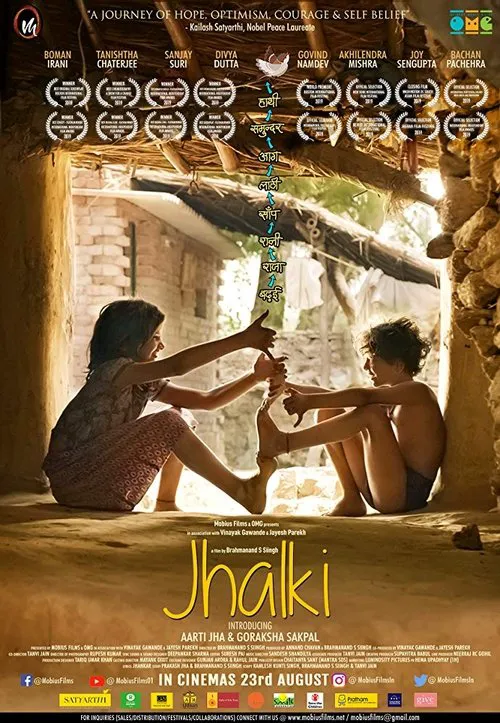Jhalki

Plot
In the scorching Indian heat, a young nine-year-old girl named Jhalki navigates the narrow streets of her small town with a mix of fear and determination etched on her face. Her bright eyes, though sun-scorched, remain full of hope as she sets out to confront the harsh realities of her world. Jhalki lives in a village where the stark contrast between poverty and luxury is glaringly evident. Her small, makeshift home, situated on the outskirts of the town, is a distant memory from the opulent mansions that stand tall in the city's affluent neighborhood. Jhalki's daily struggle revolves around her seven-year-old brother, Babu, who is her constant companion in this unforgiving landscape. The siblings rely heavily on their mother, who is away working in the city as a laborer, leaving them to fend for themselves most of the time. However, their carefree existence is brutally disrupted when Babu is suddenly taken away by a group of ruthless men who operate a child labor racket. Overwhelmed with anxiety, Jhalki embarks on an arduous journey to find her brother, armed with nothing but an intimate folk tale about a sparrow named Gulabo, who dares to challenge the oppressive forces that keep her trapped in her cage. Gulabo's story serves as a beacon of hope for Jhalki, fueling her determination to track down her brother and bring him back home. As Jhalki navigates the dark underbelly of the city, she comes face to face with the horrors of child labor that plague the lives of countless children like Babu. The inhuman conditions in the child labor camps, where children are exploited, beaten, and brutalized, shock Jhalki to the core. Yet, undeterred, she perseveres, driven by her love for her brother and her unwavering spirit. As Jhalki searches for Babu, she meets various individuals who aid or hinder her progress. Some are sympathetic towards her plight, while others mock her audacity and tell her to accept her fate. However, she remains steadfast, using her quick wit and resourcefulness to navigate the complexities of the city. One of her allies is a young man named Ankit, who initially seems to be more interested in his own life than in helping Jhalki. However, as he witnesses her unyielding spirit and determination, he begins to empathize with her cause. Ankit helps Jhalki navigate the bureaucratic red tape and eventually leads her to a small child labor camp on the outskirts of the city. Upon entering the camp, Jhalki is met with a scene that is both heartbreaking and infuriating. Babu, weak and exhausted, is trapped in a cage alongside hundreds of other children who are forced to work long hours without rest. Enraged by the injustices she witnesses, Jhalki sets out to free her brother and expose the ruthless child labor racket. With the help of Ankit and a few other sympathizers, Jhalki bravely confronts the owners of the child labor camp, demanding that they release their captive children and cease their exploitative practices. As the standoff unfolds, Jhalki uses her folk tale about the sparrow to rally the children, and together, they begin to sing a poignant and powerful song that resonates with the children and their captors alike. The song is an ode to freedom and a testament to the unbreakable spirit of the human soul. As the children's voices rise in defiance, the owners of the camp begin to tremble, and their grip on the children starts to loosen. In the aftermath of the confrontation, Jhalki successfully frees her brother and joins the other children in a procession of freedom, marching towards the outside world with hope in their hearts. The film culminates with Jhalki's triumphant return home, where she is greeted with open arms by her beaming mother. The story of Jhalki and Babu serves as a poignant reminder of the plight of the millions of children who are trapped in the web of child labor and human trafficking worldwide. The film sheds light on the insidious practices that exploit the vulnerability of these children and highlights the resilience and determination of survivors like Jhalki, who refuse to give up on their dreams of freedom and happiness. As the credits roll, the image of Jhalki and her brother walking hand in hand, side by side, symbolizes the power of hope and the indomitable human spirit that refuses to be broken in the face of adversity. The film ends with a haunting yet uplifting note, leaving the audience with a deep sense of empathy and a renewed commitment to eradicate the scourge of child labor and human trafficking from our world.
Reviews
Recommendations




